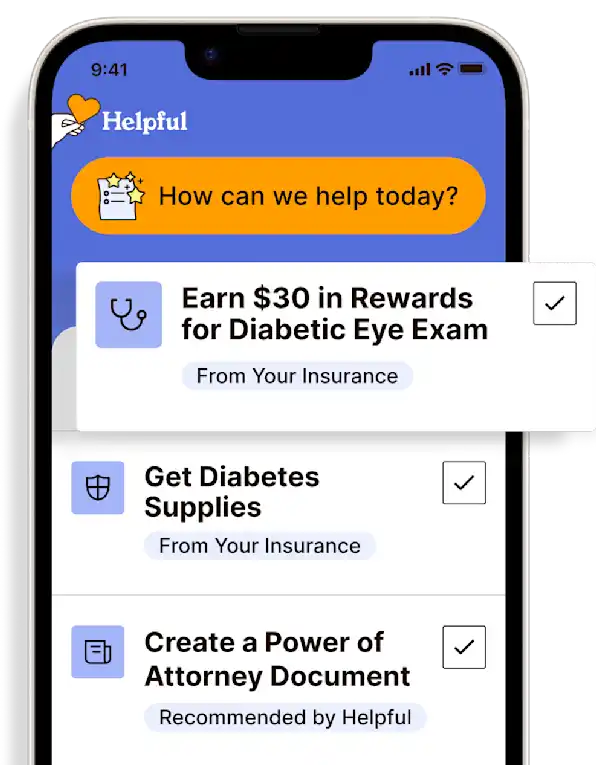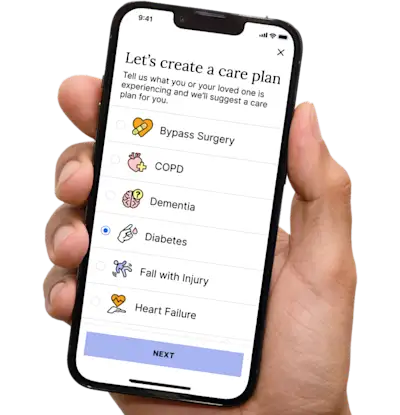How to Handle Pneumonia at Home
Pneumonia is often unpleasant, but most people respond well to treatment and don't have serious complications. You can help.
Get insurance benefits, legal documents, and medical records in one place

Helpful Highlights
Your loved one may have symptoms that prompt you to call the provider and may have symptoms that prompt going to the emergency room.
Several things are needed around treatments, hydration, and rest when recovering from pneumonia at home.
Most people start to feel better within a week and are not contagious for long.
Although pneumonia can be a very serious illness, even life-threatening, most people with pneumonia respond well to treatment.
Those at higher risk for complications are older adults, infants and young children, and those with weakened immune systems or significant medical problems.
Also, know that treatment time varies. Pneumonia does always not resolve quickly. While your loved one is in treatment and recovering from pneumonia at home, here are some helpful things to know.
When should I take them to the emergency room?
If they struggle to breathe or are short of breath while sitting still.
If they have new or worsening chest pain.
If they are confused or can’t think clearly.
If they appear to be choking and cannot clear their airway by coughing.
Persistent high fever (≥ 102 F or 39 C), despite medications to control it.
Body temperature well below their normal.
When should I call their provider?
New or worsening shortness of breath.
Fluctuations in body temp, above or below normal.
The amount that they're coughing up increases or changes color.
Fatigue is getting worse, or not improving each day.
A change in appetite (less hungry, less intake).
If they start to feel worse in any way.
What can I do to help them feel better?
Help them manage symptoms using the medications and other therapies as recommended by the healthcare provider.
Ensure they finish all medications and therapies prescribed by the provider. Your loved one should not stop taking antibiotics just because they start feeling better. They should continue taking them, as prescribed, until there are none left. If they don’t take them all, the pneumonia may come back - and stronger.
The provider may recommend medicines to help with body aches and fever; use them. Reducing pain and fever promotes healing and recovery.
The provider may prescribe a cough suppressant, which is then okay to take as prescribed. Check with the healthcare provider before taking over-the-counter cough suppressants for pneumonia, however, as coughing is an important part of clearing gunk from the lungs.
The provider may prescribe breathing treatments and chest exercises. These treatments help loosen mucus and improve breathing. They will likely need you to help them do the exercises properly.
Set up a small humidifier by the bed, and help your loved one take a steamy shower or hot bath before bed. These make it easier to breathe.
Have them drink plenty of fluids. Clear liquids are best.
Encourage them to rest. A LOT.
How soon until they begin to feel better?
This depends on many factors like their age, the cause of pneumonia, the severity of pneumonia, and if they have any other significant medical conditions or otherwise compromised health. It also depends on how active or restful they are, how adherent they are to their medications and therapies, and their hydration and nutrition status.
If they are doing well in these areas, most symptoms of bacterial pneumonia will improve within 24 to 48 hours after starting treatment. With viral pneumonia, which has no specific treatment, it may take a few days. Some symptoms, like dry cough and fatigue, may linger for several weeks.
How long are they contagious?
Pneumonia itself is not contagious, but the respiratory viruses and bacteria that lead to it are contagious. These germs are spread through coughs and sneezes and contact with infected surfaces (such as hands to face, so everyone wash their hands!).
With bacterial pneumonia, they are no longer considered contagious once their fever is gone* and they have been on antibiotics for at least two days. With viral pneumonia, they are considered contagious until they feel better and have been symptom-free for at least two days. (*Note that less than half of older adults have a fever response, so this may not be an indicator.)
What are some signs they are improving?
Temperature returns to baseline (their normal).
Coughing produces less mucus.
They get back to some of their usual activities (energy returns).
People typically feel better in about a week, though it may take about a month to feel completely back to normal.
RESOURCES
American Lung Association (ALA) - Pneumonia
American Thoracic Society (ATS) - Pneumonia
Johns Hopkins Medicine – Pneumonia
National Institute of Health (NIH) Heart, Lung, & Blood Institute – Pneumonia
World Health Organization (WHO) - Pneumonia
No content in this app, regardless of date, should ever be used as a substitute for direct medical advice from your doctor or other qualified clinician.
Get more support and guidance on insurance benefits, medical records and legal forms.
Helpful brings together your insurance benefits, legal documents, and medical records in one personalized place — so you always know what you have, and never have to search again.

Technology for Health Tasks. Mental Health for the Tough Stuff.
Helpful connects your medical records, insurance, and caregiving tasks automatically. And when you need more than logistics, a therapist is here to guide you.
In-Network and Covered
For Individuals, Couples and Families
HIPAA Compliant, Data Stays Private


Healthcare Tasks Simplified

From syncing records to spotting drug interactions, Helpful does the heavy lifting, turning complex health info into clear tasks and showing you benefits you can actually use, giving you clarity and control over your care.

In-Network Mental Health

Our licensed therapists are here to support you and your loved ones through stress, burnout, and life’s hardest moments, with an inclusive, compassionate approach that works with most insurance plans.

Create Legal Documents

Plan ahead by creating will, trusts, advance directives and more, that ensure your wishes are honored in the event you can’t speak for yourself -with Helpful guiding you every step of the way.